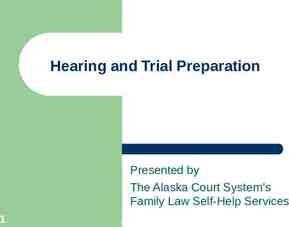Distributed File Systems Andy Wang COP 5611 Advanced Operating Systems
63 Slides371.50 KB
Distributed File Systems Andy Wang COP 5611 Advanced Operating Systems
Outline Basic concepts NFS Andrew File System Replicated file systems Ficus Coda Serverless file systems
Basic Distributed FS Concepts You are here, the file’s there, what do you do about it? Important questions What files can I access? How do I name them? How do I get the data? How do I synchronize with others?
What files can be accessed? Several possible choices Every file in the world Every file stored in this kind of system Every file in my local installation How many files do you have? Do you need to know that many files? Selected volumes Selected individual files
What dictates the choice? Why not make every file available? Naming issues Scaling issues Local autonomy Security Network traffic
Naming Files in a Distributed System How much transparency? Does every user/machine/sub-network need its own namespace? How do I find a site that stores the file that I name? Is it implicit in the name? Can my naming scheme scale? Must everyone agree on my scheme?
How do I get remote files? Fetch it over the network? How much caching? Replication? What security is required for data transport?
Synchronization and Consistency Will there be trouble if multiple sites want to update a file? Can I get any guarantee that I always see consistent versions of data? i.e., will I ever see old data after new? How soon do I see new data?
NFS (Networked File System) Version 3 Provides distributed filing by remote access With a high degree of transparency Method of providing highly transparent access to remote files Developed by Sun
NFS Characteristics Volume-level access RPC-based (uses XDR) Stateless remote file access Location (not name) transparent Implementation for many systems All interoperate, even non-Unix ones Currently based on VFS
VFS/Vnode Review VFS—Virtual File System Common interface allowing multiple file system implementations on one system Plugged in below user level Files represented by vnodes
NFS Diagram NFS Client NFS Server / / /tmp x /mnt y /home foo /bin bar
NFS File Handles On clients, files are represented by vnodes The client internally represents remote files as handles Opaque to client But meaningful to server To name remote file, provide handle to server
NFS Handle Diagram Client side Server side User process file descriptor handle NFS server VFS level vnode vnode VFS level NFS level handle inode Other file system
How to make this work? Could integrate it into the kernel Non-portable, non-distributable Instead, use existing features VFS for common interface RPC for data transport
Using RPC for NFS Must have some process at server that answers the RPC requests Continuously running daemon process Somehow, must perform mounts over machine boundaries A second daemon process for this
NFS Processes nfsd daemons—server daemons that accept RPC calls for NFS rpc.mountd daemons—server daemons that handle mount requests biod daemons—optional client daemons that can improve performance
NFS from the Client’s Side User issues a normal file operation Like read() Passes through vnode interface to clientside NFS implementation Client-side NFS implementation formats and sends an RPC packet to perform operation A client blocks until RPC returns
NFS RPC Procedures 16 RPC procedures to implement NFS Lookup() is the key operation Some for files, some for file systems Including directory ops, link ops, read, write, etc. Because it fetches handles Other NFS file operations use the handle
Mount Operations Must mount an NFS file system on the client before you can use it Requires local and remote operations Local ops indicate mount point has an NFS-type VFS at that point in hierarchy Remote operations go to remote rpc.mountd Mount provides “primal” file handle
NFS on the Server Side The server side is represented by the local VFS actually storing the data Plus rpc.mountd and nfsd daemons NFS is stateless—servers do not keep track of clients Each NFS operation must be selfcontained (from server’s point of view)
Implications of Statelessness Self-contained NFS RPC requests NFS operations should be idempotent No static variables NFS should use a stateless transport protocol (e.g., UDP) Servers don’t worry about client crashes Server crashes won’t leave junk
More Implications of Statelessness Servers don’t know what file clients think are open Unlike in most local VFS file systems Makes it harder to provide certain semantics Scales nicely, though
Preserving UNIX File Operation Semantics NFS works hard to provide identical semantics to local UFS operations Some of this is tricky Especially given statelessness of server E.g., how do you avoid discarding pages of unlinked file a client has open?
Sleazy NFS Tricks NFS read open, seek, read, close When was the last time you check the return value of close()?
Sleazy NFS Tricks Used to provide desired semantics despite statelessness of the server E.g., if client unlinks open file, send rename to server rather than remove Perform actual remove when file is closed Won’t work if file removed on server Won’t work with cooperating clients
File Handles Method clients use to identify files Created by the server on file lookup Must be unique mappings of server file identifier to universal identifier File handles become invalid when server frees or reuses inode Inode generation number in handle shows when stale
NFS Daemon Processes nfsd daemon biod daemon rpc.mount daemon rpc.lockd daemon rpc.statd daemon
nfsd Daemon Handle incoming RPC requests Often multiple nfsd daemons per site A nfsd daemon makes kernel calls to do the real work Allows multiple threads
biod Daemon Does readahead for clients To make use of kernel file buffer cache Only improves performance—NFS works correctly without biod daemon Also flushes buffered writes for clients
rpc.mount Daemon Runs on server to handle VFS-level operations for NFS Particularly remote mount requests Provides initial file handle for a remote volume Also checks that incoming requests are from privileged ports (in UDP/IP packet source address)
rpc.lockd Daemon NFS server is stateless, so it does not handle file locking rpc.lockd provides locking Runs on both client and server Client side catches request, forwards to server daemon rpc.lockd handles lock recovery when server crashes
rpc.statd Daemon Also runs on both client and server Used to check status of a machine Server’s rpc.lockd asks rpc.statd to store lock info (in file system) And to monitor status of locking machine If client crashes, clear its locks from server
Recovering Locks After a Crash If server crashes and recovers, its rpc.lockd contacts clients to reestablish locks If client crashes, rpc.statd contacts client when it becomes available again Client has short grace period to revalidate locks Then they’re cleared
Caching in NFS How do you handle invalid client caches? Write through caching Other clients poll the server periodically No guarantees for multiple writers
What can you cache? Data blocks read ahead by biod daemon Cached in normal file system cache area
What can you cache, con’t? File attributes Specially cached by NFS Directory attributes handled a little differently than file attributes important because many programs get and set attributes frequently
Security in NFS NFS inherits RPC mechanism security Some RPC mechanisms provide decent security Some don’t Mount security provided via knowing which ports are permitted to mount what
The Andrew File System A different approach to remote file access Meant to service a large organization Such as a university campus Scaling is a major goal
Basic Andrew Model Files are stored permanently at file server machines Users work from workstation machines With their own private namespace Andrew provides mechanisms to cache user’s files from shared namespace
User Model of AFS Use Sit down at any AFS workstation anywhere Log in and authenticate who I am Access all files without regard to which workstation I’m using
The Local Namespace Each workstation stores a few files Mostly system programs and configuration files Workstations are treated as generic, interchangeable entities
Virtue and Vice Vice is the system run by the file servers Distributed system Virtue is the protocol clients use to communicate to Vice
Overall Architecture System is viewed as a WAN composed of LANs Each LAN has a Vice cluster server Which stores local files But Vice makes all files available to all clients
Andrew Architecture Diagram LAN WAN LAN LAN
Caching the User Files Goal is to offload work from servers to clients When must servers do work? To answer requests To move data Whole files cached at clients
Why Whole-file Caching? Minimizes communications with server Most files used in entirety, anyway Easier cache management problem Requires substantial free disk space on workstations - Doesn’t address huge file problems
The Shared Namespace An Andrew installation has globally shared namespace All client’s files in the namespace with the same names High degree of name and location transparency
How do servers provide the namespace? Files are organized into volumes Volumes are grafted together into overall namespace Each file has globally unique ID Volumes are stored at individual servers But a volume can be moved from server to server
Finding a File At high level, files have names Directory translates name to unique ID If client knows where the volume is, it sends unique ID to appropriate server
Finding a Volume What if you enter a new volume? How do you find which server stores the volume? Volume-location database stored on each server Once information on volume is known, client caches it
Making a Volume When a volume moves from server to server, update database Heavyweight distributed operation What about clients with cached information? Old server maintains forwarding info Also eases server update
Handling Cached Files Files fetched transparently when needed File system traps opens Sends them to local Venus process
The Venus Daemon Responsible for handling single client cache Caches files on open Writes modified versions back on close What if there is a failure? Cached files saved locally after close Cache directory entry translations, too
Consistency for AFS If my workstation has a locally cached copy of a file, what if someone else changes it? Callbacks used to invalidate my copy Requires servers to keep info on who caches files
Write Consistency in AFS What if I write to my cached copy of a file? Need to get write permission from server Which invalidates other copies Permission obtained on open for write Need to obtain new data at this point
Write Consistency in AFS, Con’t Initially, written only to local copy On close, Venus sends update to server Extra mechanism to handle failures
Storage of Andrew Files Stored in UNIX file systems Client cache is a directory on local machine Low-level names do not match Andrew names
Venus Cache Management Venus keeps two caches Status cache kept in virtual memory Status Data For fast attribute lookup Data cache kept on disk
Venus Process Architecture Venus is single user process But multithreaded Uses RPC to talk to server RPC is built on low level datagram service
AFS Security Only servers are trusted here Client machines might be corrupted No client programs run on servers Clients must authenticate themselves to servers Encrypted transmissions
AFS File Protection AFS supports access control lists A file has list of users who can access it And permitted modes of access Maintained by Vice Used to mimic UNIX access control
AFS Read-only Replication For volumes containing files that are used frequently, but not changed often E.g., executables AFS allows multiple servers to store read-only copies




































































